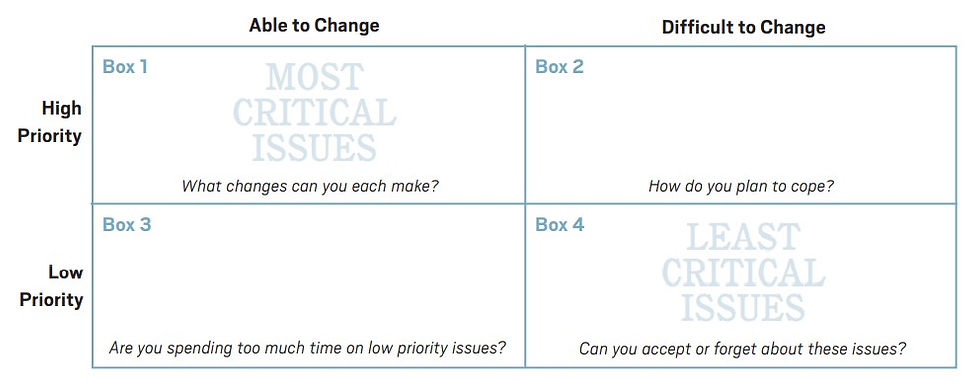Spring Cleaning
- Rev. Joel L. Tolbert
- Mar 30, 2022
- 3 min read
This morning, in our CVMA (Chester Valley Ministers Association) executive meeting, we opened in prayer. Emerson Cotton, led the prayer, and included a line something like this:
"And Father, we just ask you to help us take inventory of our hearts, and to clean out or throw away what doesn't need to be there, so we can find and do your will."
How is your heart lately? What is on your heart? What if each of us sat down and made a list of everything that is on our heart?
Today, before you read over the names and concerns of others on our prayer list, I want to invite you to step away from everything and everyone else for a moment. Find a place without beeps and buzzes, without interruptions and distractions. Pull up something to write with and something to write on. Then, make a list, take inventory of your heart. Write down everything that has your attention, your worry, that sparks your excitement, that is drawing you to say yes or repelling you to say no. Keep going. Keep writing. Don't stop yet. Any thought, any feeling, write it down. No matter how small or big, write it down. No matter how long it has been with you, or how fleeting it might seem, write it down. Keep going, keep writing, until you really can't seem to think of anything else on your heart.
Okay, there's your list, your "heart inventory."
Now, on a new sheet or page, make a big 2x2 box.
Label the first row "High Priority"
Label the second row "Low Priority" - These two rows are meant to help us make some decisions. As you reread your heart inventory, divide them into high or low. See if you can make sure at least half of your inventory are low priority.
Now, for the columns.
Label the first column "Able to Change" - These are the things that truly are in your control. You can make changes or decisions that will make a difference in these things. You aren't dependent on other people to make these changes.
Label the second column "Difficult to Change" - This will be for those things that are dependent on others. You can invite them to change with you, but they may not.
Below is a picture of how the chart will look. I use this chart when I sit with couples new to a relationship or going through relationship issues. I also use it with individuals who feel overwhelmed by many different thoughts, feelings, and issues.
For the Difficult to change and low priority - Let them go. Give them no more attention in your mind or heart. If someone insists on bringing that issue up again, just say, "Sorry, that's not one of my priorities right now."
For the Difficult to change and higher priority - Guess what? You can't change these. Stop spending time and energy figuring out how to change these things that cannot be changed. Instead, spend a few minutes designing a way to cope with this reality in your life. Make some decisions and set some boundaries. When these issues arise, honor your decisions and boundaries on how to cope without feeling the burden to change or fix.
For the Able to change and low priority - Okay, sure, these will get some of our attention. We might spend some time trying to address one or two of these, just to feel like we accomplished something. But remember, these are the lower priority. Spend more of our time and energy on the high priority/able to change, not the low priority/able to change.
Last, the for the Able to change/high priority - This is the gold mine. The time and energy you spend here will pay you back. Begin making some commitments to yourself on how you will change, so that these issues will improve.

Well, there's your heart inventory.
Difficult to change/low priority - throw it out
Difficult to change/high priority - store it away
Able to change/low priority - dust and vacuum every now and then, but not daily
Able to change/high priority - design the renovation and get started!
Blessing, laughter, and loving be yours,
Rev. Joel L. Tolbert
Comments